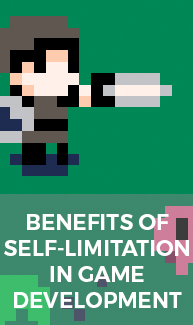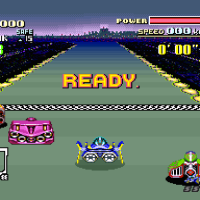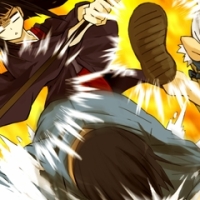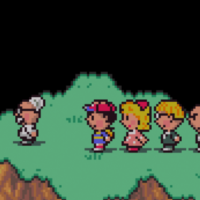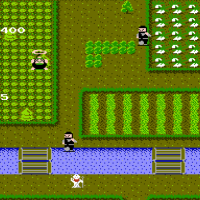
Kaze no Notam (Notam of Wind)
Developer(s): Artdink
Publisher: Artdink
Platform(s): PlayStation
Release Date: September 11th 1997 (Japan exclusive)
When it comes to capturing the feeling of flight, video games have a tendency to focus on speed above all else – modern air vehicles offer the sensation of insane velocity that many long for when soaring the digital skies, the closest thing to mankind’s dream of flight encompassed in virtual form. It’s regrettable that in this pursuit of momentum, one of the more graceful methods of flight has been sorely overlooked on many an occasion. Hot air ballooning may lack the awesome speed offered by military air vehicles, but it’s in this lack of haste that a unique experience can be found, one surprisingly untouched in video games for the most part.
Tokyo-based developer Artdink, known best for their A-Train series of railway business simulation games, approached hot air ballooning as a subject matter during a particularly experimental period in their history, one which saw the likes of Aquanaut’s Holiday and Tail of the Sun see release worldwide. Many of these games failed to garner commercial success due to their unconventional concepts, with cases of the titles even being labelled ‘non-games‘ as a result of their lack of clear conditions for victory or defeat, instead focusing sheerly on player experience. Kaze no Notam (Notam of Wind) would serve as a particularly notable product of this era in Artdink’s legacy, attempting to present a theme unseen in any game before it with a highly unique aesthetic built around it.
In fact, at a glance Kaze no Notam‘s aesthetic is potentially the game’s biggest draw. The game’s packaging, which displays a gorgeous pop-art style painting created by artist Hiroshi Nagai featuring a trio of vividly coloured hot air balloons gently drifting against a summery blue sky, high above the crystal clear waters of a swimming pool lined with vibrant foliage and all set against an exotic ocean view. Displaying such an eye-catching piece of artwork on the game’s front cover is a bold move, as well as one that sets the tone for the entire experience. Artdink were so confident in the use of this artwork, it seems, that each game was even packaged with a postcard that could be mailed away to enter a raffle to win full-sized lithographic prints of Nagai’s painting. This is a game that isn’t afraid to be forward with its plan to offer a more laid-back take on flight than you might be used to and the rest of its packaging works to only further certify this – the printed inlay inside the case even inquisitively poses the question “Did you luxuriate in the wind?”.
Clearly this is some fantastic packaging design on show that successfully creates a strong aesthetic for the title before you’ve even turned it on. However, in a surprising turn, this can almost be considered a factor contributing to the game’s undoing…
…because unfortunately, the actual game doesn’t look quite so nice. Low draw distance, incredibly blocky landscapes and some surprisingly murky colour choices don’t exactly lend themselves to replicating the luscious picture that adorns the front of the box (although this would hardly be a first for video games) and whilst for the most part this is simply due to the PlayStation’s hardware limitations, it is an undeniably disappointing revelation after such a build-up. The game has three maps with unique visuals and obstacles – ‘Drafty Valley’, a grassy open plain featuring a medieval castle and tall mountains, ‘Windy City’, a tight urban area that requires some meticulous navigation to avoid lofty skyscrapers and ‘Breezy Earth’, a bizarre Mad Max-esque desert filled with steep canyons and ruined buildings – whilst these maps are fine content wise and offer some interesting opportunities for sightseeing during your flight, they all look fairly washed out and some crippling draw distance issues see your surroundings loading one ‘square’ at a time, in a grid-like fashion. A selectable time of day and weather conditions before each mission attempt to introduce further variation, but do little to salvage the visual issues which subdue the sightseeing experience somewhat.
Whilst the in-game presentation is lacking, bizarrely it’s elements of the game’s interface that best continue the aesthetic house style set by the packaging, with loading screens and menus making use of stylish pre-rendered images more akin to what you were probably expecting (the title screen notably uses the Hiroshi Nagai artwork seen on the game’s cover, which sadly marks the only appearance of this visual style in-game). Another very strong presentational element of the game is the music – a mixture of relaxing new-age style sounds, light and fast-paced electronic beats and some quite jazzy melodies are perfect for drifting on a gentle breeze, as well as giving the whole game a quite experimental feel.
The three maps serve as the stages for three individual ‘tasks’ – ‘Fly In’ sees you simply attempting to land on a target marked out on the map. ‘Try Delta’, which requires you to mark out a large triangular area on the map, and finally ‘Wolf Hunt’, which regrettably isn’t as exciting as it sounds, focusing around intercepting a number of quite frankly terrifying animal-shaped vehicles (it is implied these are other balloons, but their erratic movement patterns and seeming lack of human pilots make these resemble alien spacecraft more than anything else). There’s a nice variety between each game type, with each one testing the player’s capability at a different component of flight such as landing or targeting, but unfortunately it’s the core gameplay that surrounds said tasks that brings them crashing down to earth like a sandbag.
Kaze no Notam differs from your traditional flight game in the gameplay sense as much as it does thematically. Rather than offer full control over your balloon, operation is reliant entirely on the direction of the wind at varying altitudes. As the pilot you are able to use the burner to gain altitude and the valve to decrease it, with the direction you travel in depending on your height in the sky and the direction of the wind at said height, which is displayed using green markers on the right hand side of the screen. This is certainly a distinctive system, as well as one that is perhaps more realistic than it seems, but it causes more than a few problems for the player; for example, say you’re only a few meters away from your target and you need to move just a few paces to the right, but the wind isn’t blowing in that direction at any altitude? Tough luck.
You’re completely at the whim of the wind and will often find yourself getting whisked far away from your goals when they’re just within your grasp as the wind changes suddenly and dramatically, pushing you in an opposite direction with no option to stay stationary as this happens. You’re always on the move, and rarely in the direction you need to be heading (something which isn’t helped along by the fact that when the wind does blow in the right direction, the angle might just be very slightly off and dismantle your whole attempt). You’ll also have to factor in a fuel meter at the bottom of the screen, depleted by every use of the burner – allow it to hit zero and you’ll be left at the mercy of the breeze, either drifting off into the distance or heading in for an undignified landing in the middle of nowhere.
Kaze no Notam‘s three tasks are infuriatingly difficult to complete, something largely a result of gameplay flaws as opposed to a deliberate sense of difficulty. The concept of a flying game that puts a strong environmental burden on the player’s movements is an interesting one, not to mention one that hasn’t been explored in games too thoroughly, but unfortunately the handling of this concept by Artdink in this case simply puts the player out of control. Some may argue that the appeal of Kaze no Notam is to simply, as the game’s packaging puts it best, “luxuriate in the wind”, drifting around the world and taking in its weird and wonderful sights – after all, if the game’s artwork and presentation are anything to go by, an emphasis has been put heavily on creating a pleasant aesthetic above all else. If this is the case, then Kaze no Notam serves as the ultimate example of form over function – one can only hope that such a unique theme as hot air ballooning will one day be revisited in a video game, although whether or not a modern attempt will come close to besting Kaze no Notam in packaging design is highly doubtful.


















